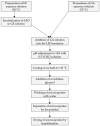Microencapsulation by Complex Coacervation of Lavender Oil Obtained by Steam Distillation at Semi-Industrial Scale
- PMID: 39335864
- PMCID: PMC11431322
- DOI: 10.3390/foods13182935
Microencapsulation by Complex Coacervation of Lavender Oil Obtained by Steam Distillation at Semi-Industrial Scale
Abstract
Lavender oil (LEO) is one of the most well-known essential oils worldwide which, besides its extensive application in aromatherapy, serves as raw material for various fields, including the food, cosmetic, and pharmaceutical industries. Accordingly, several global requirements were established to warrant its quality. Microencapsulation represents an emerging technology widely applied for the preservation of essential oils, simultaneously providing new ways of application. In the current study, lavender oil was obtained from the flowering tops of Lavandula angustifolia Mill. on a semi-industrial-scale steam distillation system. According to the GC-MS investigation, lavender oil obtained in the third year of cultivation met the European Pharmacopoeia standards for linalyl acetate and linalool contents ≈38% and ≈26%, respectively. Microcapsules (MCs) containing the so-obtained essential oil were successfully produced by complex coacervation technology between gum arabic (GA) and three different grades of type-A gelatin (GE). Optical microscopic investigations revealed a significant difference in particle size depending on the gelatin grade used. The variation observed for coacervates was well reflected on the scanning electron micrographs of the freeze-dried form. The highest encapsulation efficiency values were obtained by UV-VIS spectrophotometry for microcapsules produced using gelatin with the medium gel strength. FT-IR spectra confirmed the structural modifications attributed to microencapsulation. According to the GC-MS analysis of the freeze-dried form, the characteristic components of lavender oil were present in the composition of the encapsulated essential oil.
Keywords: Lavandula angustifolia Mill.; complex coacervation; microencapsulation.
Conflict of interest statement
The authors declare no conflicts of interest.
Figures








Similar articles
-
Aroma Characteristics of Lavender Extract and Essential Oil from Lavandula angustifolia Mill.Molecules. 2020 Nov 26;25(23):5541. doi: 10.3390/molecules25235541. Molecules. 2020. PMID: 33255893 Free PMC article.
-
Essential oils and distilled straws of lavender and lavandin: a review of current use and potential application in white biotechnology.Appl Microbiol Biotechnol. 2015 Apr;99(8):3375-85. doi: 10.1007/s00253-015-6511-7. Epub 2015 Mar 13. Appl Microbiol Biotechnol. 2015. PMID: 25761625 Review.
-
Exploring the Chemical Composition of Bulgarian Lavender Absolute (Lavandula Angustifolia Mill.) by GC/MS and GC-FID.Plants (Basel). 2022 Nov 17;11(22):3150. doi: 10.3390/plants11223150. Plants (Basel). 2022. PMID: 36432879 Free PMC article.
-
Distillation time effect on lavender essential oil yield and composition.J Oleo Sci. 2013;62(4):195-9. doi: 10.5650/jos.62.195. J Oleo Sci. 2013. PMID: 23535305
-
Recent developments in the encapsulation of lavender essential oil.Adv Colloid Interface Sci. 2024 Sep;331:103229. doi: 10.1016/j.cis.2024.103229. Epub 2024 Jun 12. Adv Colloid Interface Sci. 2024. PMID: 38878587 Review.
Cited by
-
Unlocking the potential of essential oils in aromatic plants: a guide to recovery, modern innovations, regulation and AI integration.Planta. 2025 May 25;262(1):6. doi: 10.1007/s00425-025-04724-y. Planta. 2025. PMID: 40413718 Free PMC article. Review.
-
Targeting the Gut-Brain Axis with Plant-Derived Essential Oils: Phytocannabinoids and Beyond.Nutrients. 2025 May 3;17(9):1578. doi: 10.3390/nu17091578. Nutrients. 2025. PMID: 40362887 Free PMC article. Review.
References
-
- Wells R., Truong F., Adal A.M., Sarker L.S., Mahmoud S.S. Lavandula Essential Oils: A Current Review of Applications in Medicinal, Food, and Cosmetic Industries of Lavender. Nat. Prod. Commun. 2018;13:1403–1417. doi: 10.1177/1934578X1801301038. - DOI
-
- Kozuharova E., Simeonov V., Batovska D., Stoycheva C., Valchev H., Benbassat N. Chemical Composition and Comparative Analysis of Lavender Essential Oil Samples from Bulgaria in Relation to the Pharmacological Effects. Pharmacia. 2023;70:395–403. doi: 10.3897/pharmacia.70.e104404. - DOI
LinkOut - more resources
Full Text Sources
Miscellaneous

